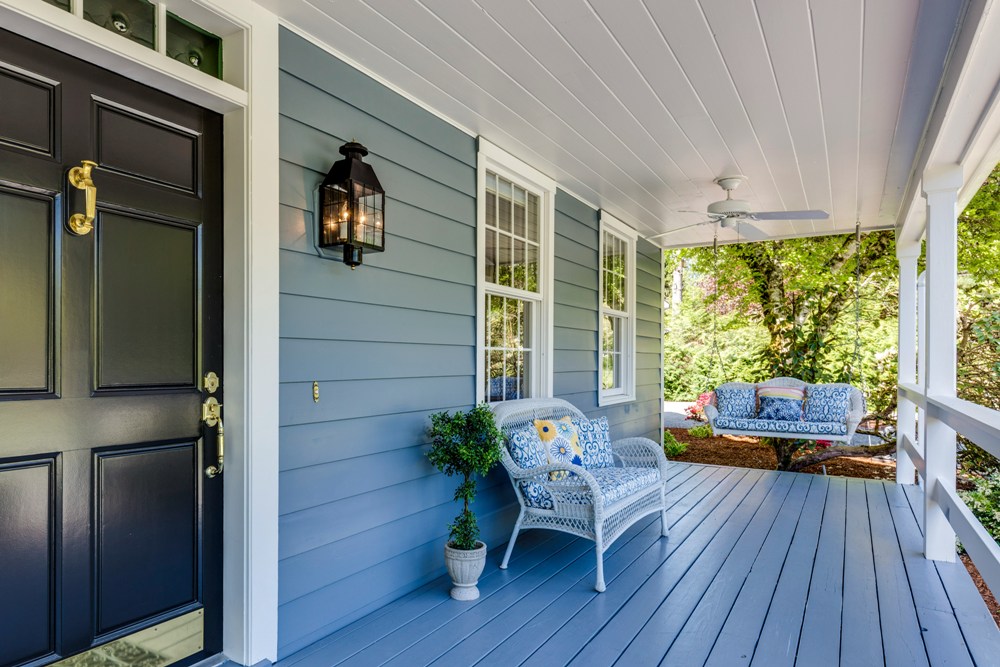
Owning a house goes far beyond securing a place to live—it's about creating a personal haven that reflects one's style, history, and character. While walls and a roof provide shelter, it is the architectural design and visual essence that transform a house into a home. A thoughtfully designed home not only welcomes its occupants with warmth and identity but also leaves a lasting impression on guests who experience it. From timeless symmetry to avant-garde silhouettes, architectural styles shape how a house communicates personality, elegance, and comfort. Partnering with skilled home builders is key to turning design aspirations into reality. Companies like IMSU and similar experts specialize in creating custom homes that balance functionality with striking aesthetics, tailoring each project to the homeowner's lifestyle and vision. With expertise in modern, classic, and distinctive styles, they guide clients through every stage, from concept and design to construction, ensuring each home reflects both personal character and enduring architectural quality.
Cape Cod Design
Rooted in the late 1600s but widely revived in the 1930s, Cape Cod design offers a cozy, unpretentious appeal reminiscent of early colonial dwellings in New England. Characterized by simplicity and symmetry, these homes commonly feature a single story or one and a half stories, gabled roofs, and a central chimney. Hallmarks of Cape Cod architecture include high ceilings, multi-pane windows, wooden flooring, and interior wood paneling that evokes a rustic charm. Dormer windows are a common addition, enhancing both the light and vertical space. Many original Cape Cod homes have unfinished upper levels, which are often remodeled into livable spaces or expanded with subtle rear or side extensions to maintain the structure's proportional harmony.
Colonial House Design
Given that the colonial home style draws its roots from immigrants who arrived in America from across Europe, it contains many modifications. The American colonial home style undoubtedly has the greatest variety of changes among all home designs, mostly because the immigrants who designed these homes originated from diverse countries. A grand stairwell and a central doorway are features of colonial homes, usually at least two floors up. The symmetry of the entire home, horizontal blinds, the frequent presence of reclaimed antique fireplaces which added warmth and historical depth to the interior, a partially covered door, and a rectangular form factor are a few of its distinguishing characteristics.
Streamline Modern Design
Emerging in the 1930s as a response to the Art Deco movement, Streamline Modern design embraced the aesthetics of motion and aerodynamics. These sleek homes exhibit curving forms, long horizontal lines, and occasionally incorporate elements reminiscent of ocean liners, such as porthole windows or chrome railings. Ornamentation is minimal, with the exception of subtle horizontal grooves or brick patterns that underscore the streamlined silhouette. Glass blocks are frequently used to invite light while maintaining privacy, and flat parapeted roofs create a clean, futuristic profile. Painted brick or stucco exteriors complete the modernistic ambiance.
Deconstructivist Design
Deconstructivism, an avant-garde architectural movement that gained traction in the 1980s, challenges traditional concepts of symmetry, harmony, and order. This design philosophy favors fragmented forms, irregular surfaces, and dramatic non-orthogonal geometries that seem to defy structural norms. The result is a deliberately chaotic visual language that plays with perception and form. By manipulating materials and layouts to appear as though buildings are unraveling or shifting, deconstructivist design offers a provocative aesthetic that often doubles as an intellectual statement on the instability of modern life.
French Country House Design
French country-style homes originated in 18th-century North America when French settlers brought elements of their homeland's architecture to the new world. Known for their rustic refinement, these homes typically feature steeply pitched hip or side-gabled roofs, narrow windows with paired shutters, and half-timbered construction. Stucco walls and romantic stonework are common, and interiors often showcase arched doorways and exposed wooden beams. Gardens and walkways are thoughtfully integrated into the overall design, lending a picturesque, storybook quality that blends countryside charm with aristocratic grace.
Constructivist Design
Constructivist architecture arose from post-revolutionary Soviet Russia in the 1920s and embodies an experimental approach to form and function. The style utilizes geometric abstraction, especially cubes, spheres, and planar lines, to create structures that are both utilitarian and conceptually bold. Hallmarks include the prominent use of steel frames, open floor plans, and exposed structural elements that make no attempt to hide their mechanical functions. Emphasis is placed on the honest expression of materials and spatial innovation, making constructivism a forerunner of many principles embraced in modernist and industrial architecture.
Craftsman Design
Inspired by the Arts and Crafts movement of the late 19th and early 20th centuries, Craftsman homes highlight superior workmanship, natural materials, and architectural honesty. These homes emphasize low-pitched gabled roofs, wide eaves with exposed rafters, and inviting front porches supported by tapered columns. Inside, built-in cabinetry, stone fireplaces, and hand-crafted woodwork abound, showcasing a reverence for artisanal quality. The Craftsman design favors a human scale and a warm, grounded aesthetic that feels both functional and deeply personal.
Log Cabin Design
Once a frontier necessity, the log cabin has evolved into a nostalgic symbol of rustic simplicity and connection to nature. Originally constructed by early settlers using readily available timber, these homes featured a compact, utilitarian layout. Contemporary log cabins retain the traditional aesthetic—often with log siding or full-timber construction—while incorporating modern comforts and open floor plans. Whether nestled in wooded areas or adapted for suburban living, these homes evoke a sense of warmth, tradition, and outdoor serenity, with interiors that often include exposed beams and stone hearths.
Victorian House Design
Victorian architecture encompasses a variety of ornate home styles developed during Queen Victoria's reign, with a shared emphasis on decorative complexity and craftsmanship. These homes are known for their asymmetrical facades, steep gable roofs, patterned shingles, and expansive porches with turned posts and spindled railings. Interiors are equally rich, often featuring stained glass, intricate woodwork, and layered textures. While modern Victorian homes maintain the visual drama of their predecessors, they frequently blend historical detailing with contemporary materials and updated color palettes for renewed sophistication.
Choosing the right architectural style for a home is a deeply personal decision that should reflect not only aesthetic preferences but also lifestyle needs. From the dignified symmetry of colonial structures to the imaginative boldness of deconstructivist forms, each style offers a unique way to shape one's domestic world. The ideal home is one that fosters comfort, invites admiration, and serves as a lasting expression of those who inhabit it.
EDITORIAL POLICY
The Flash List is dedicated to providing trustworthy editorial content by maintaining strict ethical standards, journalistic integrity, and credible professionalism regardless of any remuneration as working media. The Flash List is not affiliated with third-party companies mentioned and makes no endorsement or guarantee expressed or implied. The preceding article, which contains affiliated link(s) for which compensation was received, is intended for informational reference only and does not constitute advice of any kind. Moreover, a qualified professional should be consulted regarding any lifestyle consideration, medical treatment, or monetary transaction, etc. Content is published in accordance with USFTC regulations and terms and conditions.
MORE ON THE FLASH LIST
































